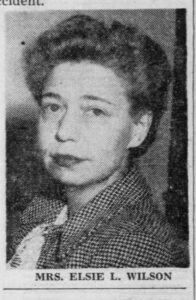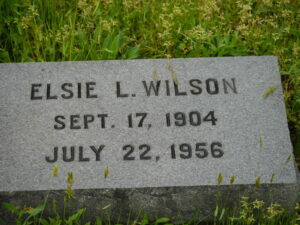
A Ghost in Black Mountain

Ghost stories give us glimpses of our past. Often in these stories, real people from the past inhabit present-day spaces, living on in legend as ghosts long after their demise. One such ghost is Petunia, who is said to haunt Abbott Hall at Blue Ridge Assembly in Black Mountain.
As the story goes, “If you hear slamming doors in the middle of the night, banging and groaning sounds, it’s probably the ghost of Petunia, a woman who met an untimely death many years ago.”
“The slamming doors and mysterious sounds first started on July 22, 1956,” according to a written version of the story archived at the Swannanoa Valley Museum. “A guest named Petunia fell, or jumped, from a window in Room 13 of Abbott Hall at 3:15 a.m. That same morning two guests who were doctors also staying in Abbott, rooms 1 and 3, were awakened by groans coming from underneath their windows. The two men rushed outside and discovered Petunia on the ground under the window of Room 13. She was dead.”
The story ends with the unknown. “No one knows why she exited the building in such a disastrous way. Was she pushed? Did she jump? We (may) never know, but one thing’s for sure, she has made her presence known in Abbott Hall ever since,” the account reads.
But what if we could know more about Petunia? Who was she in life? How did she find herself at Blue Ridge Assembly during the summer of 1956? And what really happened at that Abbott Hall window on July 22, 1956? And, if these questions could be answered, would it help Petunia to rest peacefully?
As it turns out, a scan of the Asheville Citizen newspapers on July 23 and 24, 1956, revealed the essential facts. “Petunia” was actually a 51-year-old woman named Elsie Larsen Wilson visiting Blue Ridge Assembly as a delegate to an institute for social work executives.
Wilson, a widow with no children, resided with her mother in Shreveport, Louisiana, where she served as executive director of the Caddo-Bossier’s United Fund and Community Chest organizations. She had received accolades in the community for her work.
“Credit for the success of the Council of Social Agencies is due mostly to the work of Mrs. Elsie Larsen Wilson,” project chairman of the Junior League of Shreveport said of Wilson in a 1950 Shreveport Times article. “She has given direction to social welfare in the community since the day she arrived.”
But Wilson refused to take full credit, saying in response that the “work of the council could not have the scope it does if the best lay people were not willing to work with professional social workers. … These men do the same quality of work for these social projects as they do for their own businesses or professions.”
It was in the course of this work that Wilson found herself in Black Mountain that July, when she was serving as the vice president for the annual Blue Ridge Conference of Social Workers.
After meeting with other conference officers the evening of July 21 in preparation for the conference opening the following morning, Wilson called home to check on her mother and told her she planned to retire early to her room.
Elsie’s single room on the second floor had no air conditioning, so she slept with an open window.No one saw her fall 25 feet from the window ledge to the ground that night, but the occupant of the room directly below hers, Dr. William L. Leap, heard her cries and went outside to investigate. Dr. Leap found Elsie, unresponsive, but still alive, at 3:10 a.m. He immediately called an ambulance, which rushed her to Mission Hospital in Asheville.
Even before the sun rose, rumors circulated about how Elsie might have fallen. The Shreveport Times spoke with her employer, who speculated that she may have mistaken a low window sill for a door. Her friends in Shreveport told reporters that “she was given to walking in her sleep.”
Attempts at the hospital to save her life failed, and Wilson died at 11:50 a.m. from “extreme shock and fractures to the ribs and pelvis,” according to The Asheville Citizen.
The Buncombe County Sheriff’s Office launched an investigation into her death and soon ruled it accidental. Ruth Shiffman, a friend of Wilson’s who rode with her in the ambulance, told deputies that Elsie regained consciousness on the way to the hospital.
Elsie told Ruth that she woke up during the night and turned on the bedside lamp. Because she had a knee injury she braced herself against her single bed as she got up. The bed, however, was on wheels, so when Elsie stood, it rolled across the floor. She lost her balance, tripped over the 18-inch high window sill, toppled out of the open window, and landed on her back on the ground.
Though we may never know how Wilson became known as Petunia in the retelling, perhaps guests staying in Abbott Hall can rest easier knowing that the mysterious bangs they hear in the middle of the night are only the spirit of the woman making sure that the windows on the upper floors are closed and locked, working in death as she did in life for the welfare of the community.
Anne Chesky Smith is the executive director of Asheville Museum of History.
